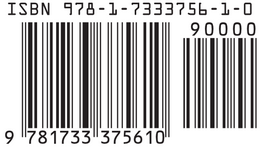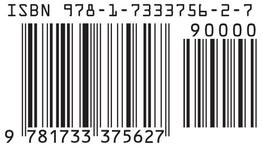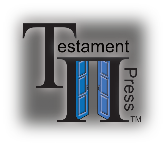About Self-Publishing
So you’ve now written your book, gone through the editing process, and designed your cover. Now what?
Get an International Standard Book Number (ISBN)
An International Standard Book Number (ISBN) is a 13-digit number that uniquely identifies your book (before January 1, 2006 it was a 10-digit number and between January 1, 2006 and January 1, 2007, it was the transition period where both the 10-digit and 13-digit codes were used). An ISBN is registered to a person or publisher, so make sure you get it in your name or your self-publishing company name so you have control.
The only agency allowed to assign ISBNs in the United States is R.R. Bowker (www.bowker.com or www.isbn.org). This is both good news and bad news. It makes it easy to know where you have to go, but there is no competition. If you’re not in a hurry, then sign up for Bowker’s email newsletter—they run special deals all the time. If you are outside the United States and need an ISBN, the International ISBN Agency (www.isbn-international.org) is where you need to go.
The barcodes that appear on the backs of books are called Bookland EAN (European Article Number) or ISBN-13 barcodes. ISBN-13s are preceded by a two or three digit prefix that denotes the country of origin. Because the book industry creates so many products, a new code of either 978 or 979 is now used for international standardization purposes. Either of these three digit codes signifies the book comes from Bookland, a fictitious country from where all books come, and these codes are called Bookland EANs.
Keep in mind that you will need an ISBN for every FORMAT of a particular title you intend to sell. So, if you have a paperback, hardback, and digital (.epub, .mobi, etc.), you will need three ISBNs right off the bat. Note that the same ISBN can be used for multiple digital versions (.epub or .mobi). You will also need a new ISBN if you ever update your book to a new (second, third, etc.) edition, but you do not need to have a new one if only minor changes are made to your book.
Alongside the ISBN there can also be a five digit price code. The first digit of the price code denotes the currency used for the price—a 0 for British pounds and a 5 for US dollars. So, a code of 51999 denotes that the retail price of the book is $19.99 in US dollars. Note that the price typically paid will be lower, depending on where it is bought. If the first digit is a 9, then there is no suggested retail price. When a book with this preceding 9 is scanned in a bookstore at checkout, then the price is looked up in their local store database. Numbers from 90001 to 98999 may be used by publishers for internal purposes, while complementary tomes are marked with 99991. 99990 is used to mark used books.
Below are the barcodes for the books in our series,The Bridge to the New Testament: A Comprehensive Guide to the Forgotten Years of the Inter-Testament Period:



The first is for the hardback version, the second for the paperback, and the third is for the answer book. Note that the answer book price code is $10.00 US dollars (denoted by the 5).
Note that there is no need to pay for a ISBN/price barcode, but there are many places that will sell you one or the capability to generate one. But, if you use Ingram Spark (see under the discussion for Printing Your Book), for example, they will provide one to you for free. To generate one without going through Ingram Spark, then check out the offerings at smallpressbarcode.com.
A great place to look up an ISBN is on ISBNdb.com.
Note that International Standard Serial Numbers (ISSNs) are used for periodical publications while International Standard Music Numbers (ISMNs) are used for sheet music.
Categorizing Your Book
BISAC Codes
The most common way to categorize your book is with Book Industry Standards and Communications (BISAC) codes. These codes are used as search terms in book databases and as shelving guides for librarians.
BISAC codes are represented by a nine-character alphanumeric code. BISAC codes can be one to four levels deep, with currently 54 major, upper-level codes. A list of these may be found at bisg.org/page/BISACEdition. Publishers and printers will typically require you to have from one to five BISAC codes when publishing your book. The most specific subject should be chosen for a book, so for example, if RELIGION / Judaism / History is chosen, then RELIGION / Judaism / General should not be used.
Even though often required by online publishers and printers, they may or may not appear on your book, based on your preferences. BISG (the Book Industry Study Group), the organization responsible for BISAC codes, suggests they be put on the back cover on the lower left-hand corner.
Thema Codes
Another way of categorizing your book is with Thema Codes, with 26 high levels of classification. Again, the most specific category should be chosen for your book, e.g., NHC (where N is the History & Archaeology category, H is for History, and C is for Ancient History). Thema codes may be found at www.editeur.org. This website also has the ONIX standard specification for books and eBooks.
Printing Your Book
There are two major players in the world of printing--Amazaon (KDP) and "not-Amazon," represented by Ingram Spark. Even though Ingram Spark allows you to distribute to Amazon as well, it is more cost effective to set up with Amazon independently.
Ingram Spark
The best way to set up your book for distribution to "everyone but Amazon" (and there seems to be concensus about this in the publishing business), is with Ingram Spark. They will distribute your book to some 40,000 retailers, libraries, and book stores. They offer many different trim sizes, paper options, and color choices. They will also distribute your ebook. Once you set up an account with them, you specify your ISBN number(s) and create the metadata to go along with you book (book description, author biography, catagories (see Catagorizing Your Book, above), pricing information, etc.). Once the metadata is set up, you upload two files--one for the interior of your book and the other for the cover. They will provide a template, in either InDesign or PDF format, that must be used for your cover. This template will contain your ISBN/price code that should be put on your back cover (typically in the lower right corner).
Amazon (KDP)
This section is currently under construction. Please check back later.
Getting the copyright for your book
You may apply for a US registered copyright either before or after the work is published. Note that your work is protected by copyright as soon as it is created; however, a registered copyright will be of value to you if anyone ever infringes your copyright. A copyright, in general, protects the work for the life of the author plus an additional 70 years.
The place to start is with the US Copyright Office and a list of frequently asked questions may be found here. If you choose to register your copyright online, then an account must be set up at eco.copyright.gov, where the “eco” stands for the Electronic Copyright Office. In most cases, two copies of the “best edition” of your work must be submitted within three months of a work being published, and this is known as “mandatory deposit.” In other words, if you have a hardback and paperback versions of your book, then two copies of the hardback will need to be submitted, at the author’s expense, after the copyright paperwork is completed and the copyright fee is paid. These copies become the property of the US government. The clock starts counting when they receive the copies—the entire process typically takes around three months if no issues are encountered.
Advertising Your Book
This section is currently under construction. Please check back later.
